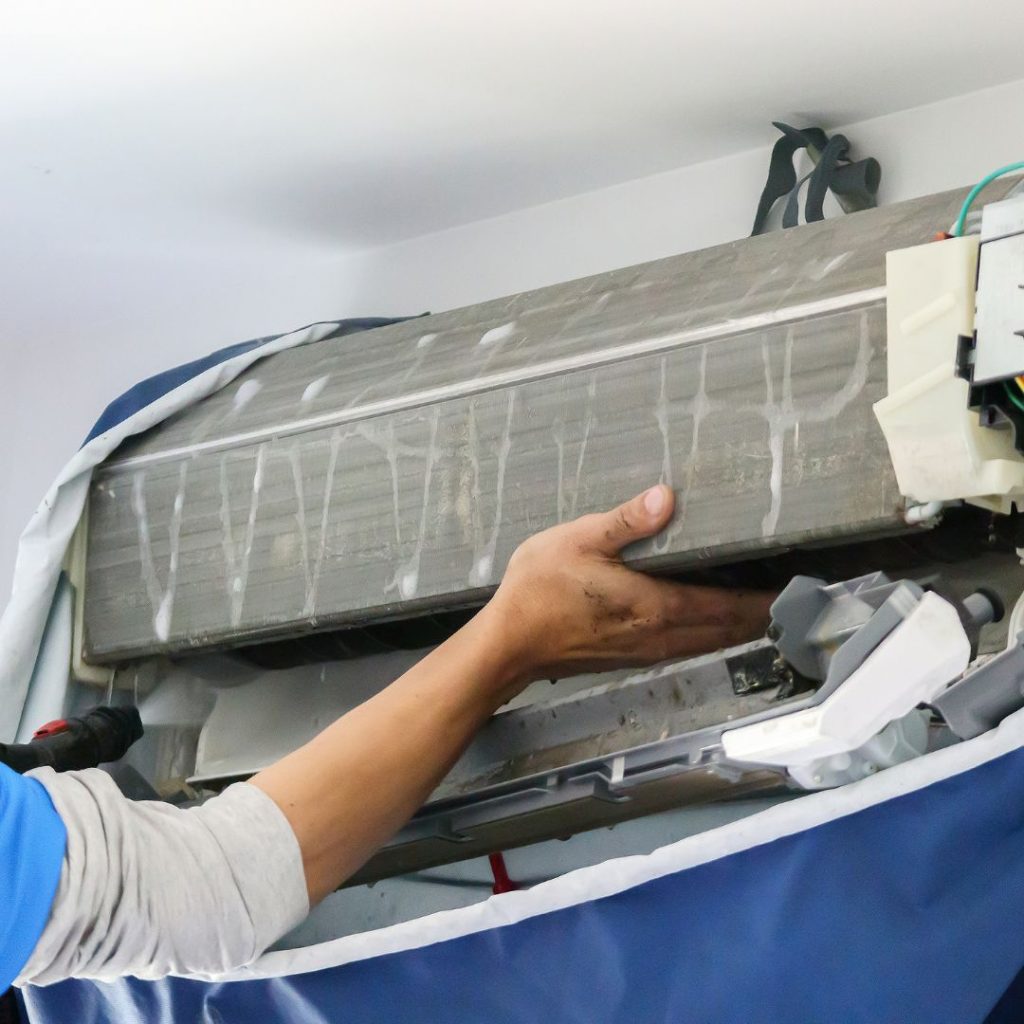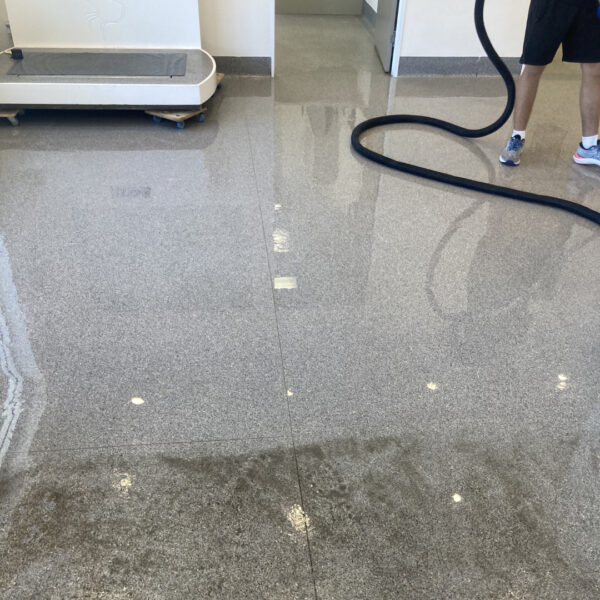
Maintaining a comfortable indoor climate is essential for the well-being and efficiency of any home or office. One critical aspect of achieving this is ensuring your split system air-conditioner is in top-notch condition. Regular cleaning is key to its optimal performance, energy efficiency, and longevity. In this guide, we’ll walk you through the steps involved in split system air-conditioner cleaning, empowering you to keep your space cool and refreshing.
Experience the magic in just 30 Seconds!
Watch our skilled technician’s process to bring life back to a split system air-conditioner.
Step 1: Safety First
Before diving into cleaning, always prioritise safety. Turn off the power supply to the air-conditioner at the main circuit breaker. Additionally, ensure you have all necessary personal protective equipment.
Step 2: Exterior Cleaning
Start by cleaning the exterior components. Wipe down the unit with a damp cloth to remove dust and debris. Trim any vegetation around the outdoor unit to ensure proper airflow. Make sure the unit is on a level surface to prevent any strain on the components.
Step 3: Filter Cleaning
The air filter is a critical component responsible for trapping dust and contaminants. Remove the filter according to the manufacturer’s instructions. Clean reusable filters by vacuuming or washing them with mild soap and water. For disposable filters, replace them with a new one.
Step 4: Coil Cleaning
Over time, the evaporator and condenser coils may accumulate dirt and grime, hindering the heat exchange process. Use a soft brush or a vacuum cleaner to remove debris gently. For more stubborn dirt, a mixture of mild detergent and water can be applied. Ensure the coils are dry before reassembling.
Step 5: Fin Cleaning
The aluminium fins on the coils are delicate and can easily bend, affecting the system’s efficiency. Straighten any bent fins using a fin comb or a gentle touch. Be cautious not to damage the fins in the process.
Step 6: Drain Cleaning
Condensate drains can become clogged over time, leading to water damage and increased humidity. Clear the drain channels using a stiff wire or a mixture of bleach and water to prevent clogs.
Step 7: Duct Inspection
Inspect the air ducts for any visible signs of mould, dust, or debris. If necessary, hire a professional duct cleaning service to ensure the entire system operates at peak efficiency.
Step 8: Check Refrigerant Levels
Low refrigerant levels can impact the system’s cooling capacity. If you notice decreased performance, contact a qualified technician to check and replenish refrigerant levels.
Conclusion:
Regular split system air-conditioner cleaning is a simple yet effective way to ensure optimal performance, energy efficiency, and a healthier indoor environment. By following these steps, you can extend the lifespan of your unit and enjoy the comfort of a well-maintained cooling system. If in doubt or for more complex tasks, always consult with a professional HVAC technician to ensure the longevity and efficiency of your air-conditioning system.
Now you know what to do, but having the time to actually do it is another thing. Many of you are time poor so please don’t forget to consider letting us do it on your behalf. We can arrange a thorough and professional clean of your air-conditioning units by trained and experienced technicians.
Revitalise Your Space Today!
Schedule Your Split System Air-Conditioner Cleaning for Purer Air and Peak Efficiency.
Frequently Asked Questions About Split System Air-Conditioner Cleaning
It’s recommended to clean your split system air-conditioner at least annually, but as frequently as every 6 months, depending on usage. Regular cleaning ensures optimal performance and energy efficiency.
Yes, you can clean reusable air filters with water and mild soap. Rinse thoroughly and let them dry completely before reinstalling. Disposable filters should be replaced.
Use a soft brush or a vacuum cleaner to gently remove debris from the coils. For stubborn dirt, a mixture of mild detergent and water can be applied. Ensure the coils are completely dry before reassembling.
Yes, cleaning the aluminium fins is essential. Use a fin comb or a gentle touch to straighten any bent fins. Avoid causing damage to maintain the efficiency of the system.
The drains can be cleared using a stiff wire or a mixture of bleach and water. Regularly clearing the drains prevents clogs and potential water damage.
While you can visually inspect air ducts, it’s recommended to hire a professional duct cleaning service for a thorough assessment and cleaning. Professionals have the tools and expertise to reach deep into the ductwork, ensuring a comprehensive removal of dust, debris, and potential contaminants. This approach guarantees a more effective cleaning process and contributes to maintaining optimal indoor air quality.
Wipe down the outdoor unit with a damp cloth to remove dust and debris. Trim vegetation around it for proper airflow. Ensure the unit is on a level surface to prevent strain on the components.
It’s best to use a mild detergent specifically designed for cleaning air-conditioner coils. Harsh chemicals may damage the coils or affect system performance.
Bent fins reduce the efficiency of heat exchange. Straightening them with a fin comb or a gentle touch helps maintain the optimal performance of the air-conditioner.
Signs of low refrigerant levels include decreased cooling performance and a noticeable increase in energy bills. If you observe these signs, consult with a professional technician for a thorough inspection.
Regular cleaning enhances the air-conditioner’s performance, improves energy efficiency, prolongs its lifespan, and contributes to a healthier indoor environment by reducing allergens and contaminants.
While you can visually inspect for visible issues, a professional duct cleaning service is recommended for a comprehensive assessment. DIY methods may not cover all potential problems.
After cleaning a reusable filter, allow it to air dry completely before reinstalling. This may take a few hours, depending on the humidity and air circulation in the area.
Ideally, it’s best to clean the air-conditioner before the peak seasons of heavy usage – Spring and Autumn. This ensures optimal performance when you need it most.



